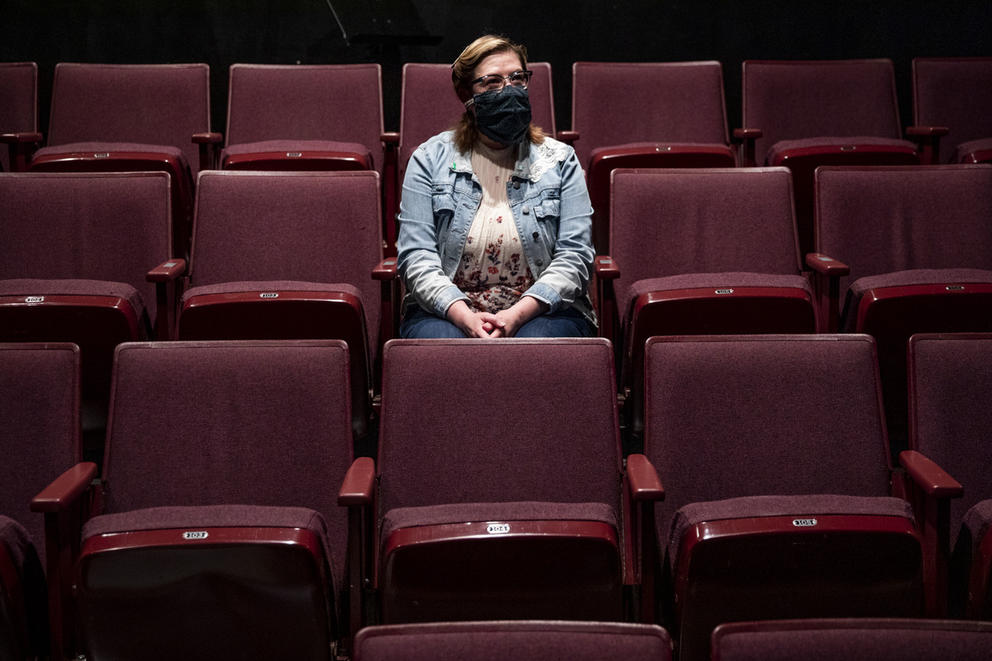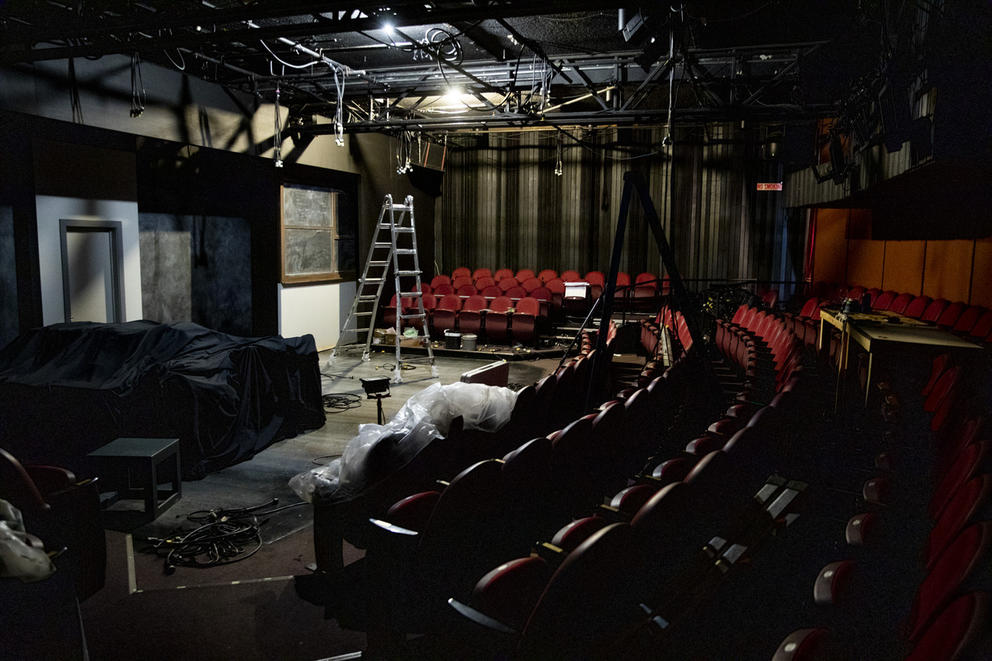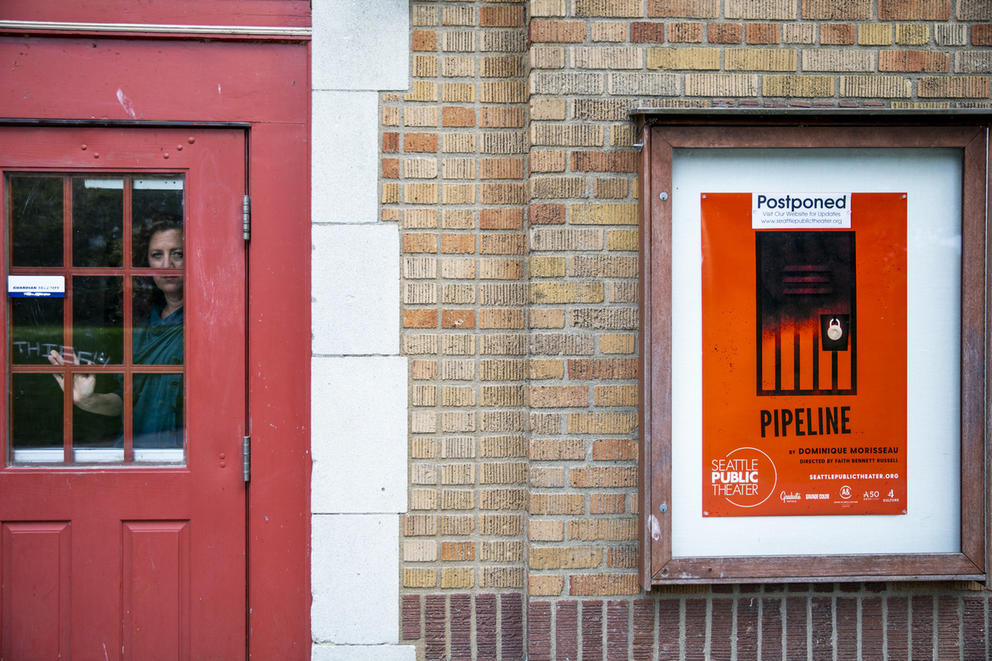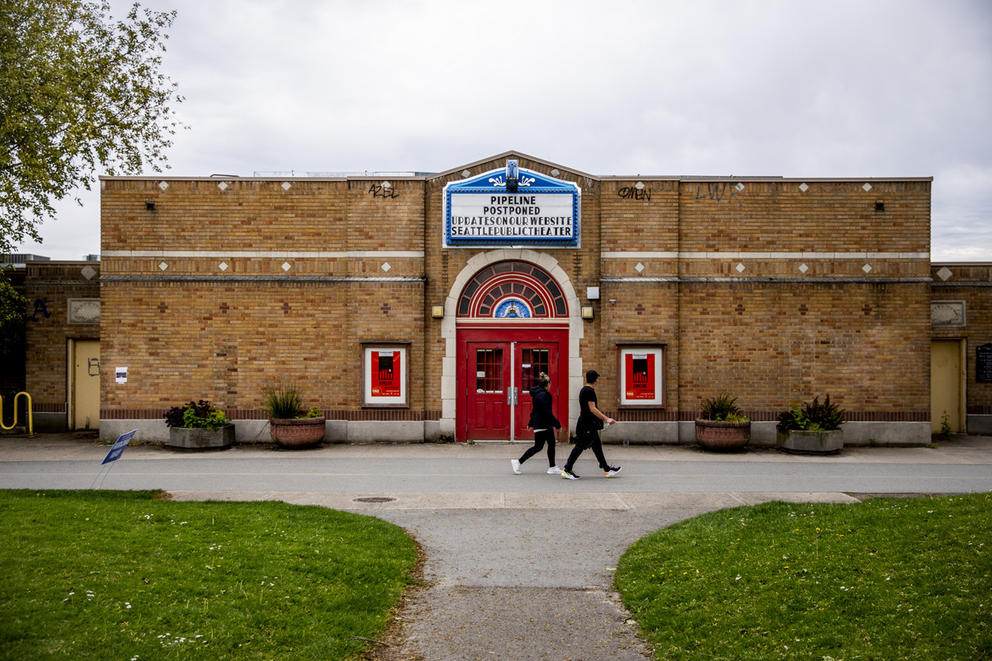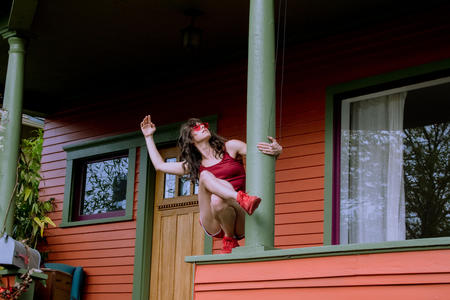Just a few short months ago, this would’ve been a run-of-the-mill theater experience. But the coronavirus pandemic has relegated the live theater experience as we know it to a not-so-distant past.
Going to see a play or musical won’t be the same for a long while, and as Washington and other states calibrate their plans for reopening, local and national theaters are starting to grapple with what the “new normal” might look like for live performance.
While gasping for air after the gut punch of the outbreak, many theaters scrambled to figure out options for online streaming as a stopgap solution — just as musicians, dancers and other artists have done. But nothing, almost all theaters say, can replace the live experience. “If you don’t have an audience, you don’t have that art form,” says Laura Lee of ArtsWest Playhouse and Gallery in West Seattle. “If we were meant to be streamed, we would be a Netflix series.”
“The first thing was shutting down and survival,” says Bernie Griffin, managing director of The 5th Avenue Theatre. As reopening comes into focus, theaters can finally start looking ahead to being physically and safely together again, says Griffin. “Right now, everybody is working on that plan."
But that plan is still very much in progress. While awaiting guidance from the state and the Centers for Disease Control and Prevention, local theater directors are flocking to Zoom to pool ideas and brainstorm safety protocols, even as many organizations are still in survival mode.
Washington farmers markets are reopening, but won't look the same. Here's what will change.
The most basic adaptations will be hygienic: the addition of hand sanitation stations and vigorous and repeated cleaning of all surfaces. Some theaters are also considering switching to e-tickets and e-programs to avoid close contact and lines at will call. ArtsWest is planning to introduce a system of preordered concessions only and all programs will be virtual.
But theaters are facing thornier issues as well: Can table reads (when actors read through the script together in advance of rehearsal) be done successfully by videoconferencing? Can concession stands be outfitted with plexiglass?
And, asks Lee of ArtsWest, “Are the actors masked? Is that part of the costume design for next year?” She says the theater will provide face coverings for patrons when it reopens. “Like when you go into a movie, with [boxes for] clean and dirty 3D glasses,” she adds.
The CDC now recommends the general public wear cloth face coverings or masks. Here's what you should know.
Lately, David Gassner, producing director at the tiny 18th & Union theater in the Central District, has found himself browsing the internet to see if he could get the theater’s logo printed on face masks for audience members. If guests don’t bring their own mask to the narrow, 49-seat theater, he says, “it’s possible we will have washable 18th & Union branded masks clean and ready for use.”
That’s just one aspect of mid-pandemic theater. The hardest part might be the human-scale puzzle mapping out the logistics of social distancing. If patrons have to stay 6 feet apart, theaters might have to introduce staggered entrance times and one-way “aisles” as in some supermarkets, and reconfigure bathrooms, lobbies and seating arrangements.
Most theaters are exploring the use of “dead seats” (deliberately empty) between patrons to space out, checkerboard style, individual audience members or clusters of people who live together.
Gassner, of 18th & Union, says he might have the theater’s riser, the platform on which the audience sits, rebuilt so it can accommodate slightly more people than the current arrangement in a socially distant configuration.
That won’t be easy, but it likely won’t be as much of an ordeal as it will for Seattle Rep, where the largest venue, the Bagley Wright Theatre, has a capacity of more than 800. “We’re the theater that completely recreated our space for Here Lies Love,” says the Rep’s artistic director, Braden Abraham. To create an immersive experience for the 2017 David Byrne production, the Rep removed 328 of its 842 seats. The company might just come up with a similarly radical seating arrangement by the time the theater (likely) reopens this fall. (The Rep is also considering moving some performances outdoors.) “We’re not afraid to do something bold here,” Abraham says.
Not everyone wants to go the reseating route. For some theaters, limiting ticket sales to a fraction of seats might not be financially viable. “We did some modeling,” says The 5th Avenue’s Griffin. “In a 2,000-seat auditorium, that means 350 people [could attend]. That’s just not going to work economically.”
And even if it did make financial sense, will people show up? According to a recent survey (first reported on by The Seattle Times), most Seattleites say they will continue to avoid social gatherings and physical contact during the next year or longer. And a new national study suggests that theatergoers might be less inclined to attend until there’s a vaccine.
Actors experience similar anxieties about crowding into packed spaces (where performers are projecting their voices and audience members are prone to coughing fits). Quarantining actors in company housing, as the Utah Shakespeare festival has proposed, seems far-fetched for smaller and cash-strapped companies.
Hurting for cash more than ever, event producers wait for Brown Paper Tickets to pay up
Socially distancing on stage might be an option, some theaters say, though it could mean that ensembles shrink (and, consequently, change the types of plays that can be staged). “If people need 6 to 10 feet, we can only have three people on stage,” says Kayti Barnett-O’Brien of Book-It Repertory Theatre. “They can’t be near and they can’t touch each other.”
If actors can’t embrace or kiss, it might serve to crank up the romantic tension, Barnett-O’Brien says, but creative workarounds only go so far. And then there are all the other human relationships and life’s moments that will have to be staged differently, she says, asking, “What does that to the art itself?”
The summer season of the Barrington Stage Company in Pittsfield, Massachusetts, suggests changes are waiting in the wings. The company is forging ahead with a modified summer performance schedule by removing seats, staging dramas in which the characters are already socially distant in the pre-pandemic sense of the term and placing a new focus on one-person plays. (In addition: no intermissions, meaning no bathroom lines.)
We may start seeing similar approaches in Seattle, says Gassner of 18th & Union. At his shop (and likely elsewhere), everything will be skewed “low tech, small scale,” he says. “The days of shows with 10 actors at 18th & Union are gone for now.” Small-cast shows and solo performances will be the theater’s new normal. “It serves our model well,” Gassner adds, “because they don’t require [as much] on-stage rehearsal and tech time.”
Small, scrappy theaters could potentially be quicker at adapting to the coronavirus constraints. Such spaces lend themselves to solo performances and minimal casts, and don’t have the large staff and overhead that bigger houses must carry. They could likely open sooner under Gov. Jay Inslee’s four-part-plan, given that some of them have a maximum capacity of 50 even in nonpandemic times. Plus, they usually don’t spend weeks, nor thousands of dollars, on a production — which makes it easier to pivot.
“We have the benefit of being a kind of rock ’n’ roll fringe theater,” says Jade Jones, one of the artistic directors of the volunteer-run Annex Theatre on Capitol Hill. When forced to cancel April performances of One Horse Town, the team turned out a serialized audio version of the play. When it premiered on Facebook Live, Twitch and YouTube, alongside pre- and post-show live discussions with the makers, “We got as many views as we would have sold out,” says Annex’s other artistic director, Hannah Ferguson.
Technically, they didn’t sell out: Annex is not charging for any performances and relies solely on online donations right now. “We're just asking, busker-style: ‘Hey, if you liked this, if you’ve tuned in, could you just throw us a couple bucks on the Patreon or Venmo?'” Jones says.
For its next show, Lava Kingdom: Vampires of the Neverwood (in June), the Annex creative team is recording footage of actors reading five different scripts in front of green screens. They’re also commissioning artists to create several distinct digital backdrops. The result will be a choose-your-own-adventure play, wherein audience members watching online will determine what happens in the plot by voting on different narrative roads. Performers will interact with the audience by chiming in via the live webcam.
The drastic fallout caused by the coronavirus has prompted such creative responses — and also a kind of reckoning with the way theaters have become accustomed to operating. Even when the theater is allowed to reopen, Jones says, Annex plans on continuing a hybrid model of offline and online performance options. It's likely that Annex’s revenue model will change, too. Pre-pandemic, most of its money came from concessions. Now and in the future, it plans to keep supplementing that with online donations.
Maybe it’s time for a shake-up of the traditional subscription model, says Cristin Miller, managing director of Seattle Public Theater, which has its main venue in the Green Lake bathhouse. For ages, patrons have basically paid for theater upfront by buying into a whole package (a season) of shows at once rather than one-offs.
“The traditional subscription model has been on the wane for quite some time,” Miller says. “Younger people are less interested in that anyway.” Add to that a pandemic, and levels of lockdown that might ebb and flow along with the COVID-19 danger, and a model of regular monthly donations and ticketed streaming options starts to look like a smart idea.
Miller has been discussing the idea with other theaters in town. “You pay a monthly fee and we will provide you with content. We’d like to say it’s this kind of content, but it might be something else,” Miller says. “Kind of like a farm share, but for theater.” You might get a pint of blueberries, or you might receive some rhubarb, but at least you always get something fresh out of the box. (Plus, the knowledge you’re supporting something you believe in.)
Coronavirus has altered our world and our art, and is forcing art creators of all kinds to rethink decades, if not centuries-old systems of consumption and support.
“The baseline of that relationship has to change,” Miller says. “Otherwise there will not be art to go to once this is all over.”
Get the latest in local arts and culture
This weekly newsletter brings arts news and cultural events straight to your inbox.

